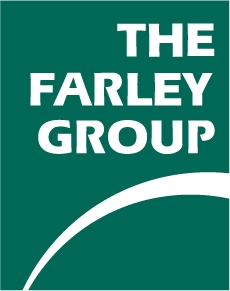
We collect basic website visitor information on this website and store it in cookies. We also utilize Google Analytics to track page view information to assist us in improving our website.
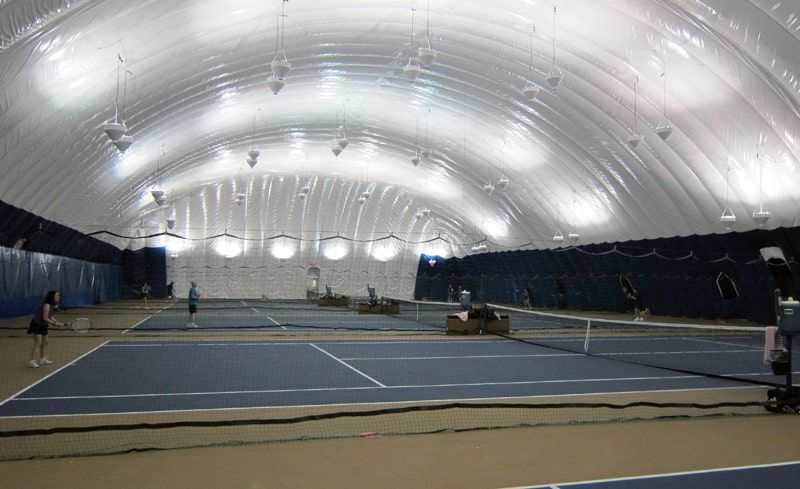
Historically, Canada hasn’t exactly been known for its tennis cred. If you thought to name Canada’s Top Ten Sports, tennis probably wouldn’t have made the list - even after naming hockey, lacrosse, baseball, skiing and ice fishing.
But things are changing fast.
Tennis now ranks as the 8th most-played sport in the country, with 6.6 million Canadians hitting the courts last year. The number of frequent plays (meaning people playing four or more times over 12 months) has risen 36%. What’s more, the rise in tennis participation among young Canadians is even stronger, with over 510,000 kids between 6 and 11 taking up the racquet.
Not to mention the growing list of young Canadian tennis superstars like Dennis Shapovalov, Felix Auger-Aliassme and Bianca Andreescu. The future of tennis in this country - both professionally and recreationally - looks brighter than ever.
There’s just one little problem: winter. To be specific, it’s the bone-chilling, bus-cancelling, 30ᵒ-below-freezing-style winters we get here in Canada.
Despite popular belief, it’s not impossible to play tennis outdoors in the winter. For tennis diehards, it could even present a bit of a fun challenge. However, most municipalities don’t maintain their outdoor courts in the winter, and the supply of indoor tennis courts is seriously lacking.
Of the 7,500 tennis courts open for use in the warmer months, only 10% get covered with an air dome during the winter. That’s only one covered tennis court for every 50,000 Canadians...and 85% of those courts are in either Toronto, Montreal or Vancouver.
Why are there so few? The CEO of Tennis Canada, Michael Downey, put it best. “We’re fighting this perception that tennis is a summer sport,” he says in an interview with the Globe and Mail.
That perception might’ve been true once, but times have changed, and 51% of Canadians now say they would play more tennis if they had access to convenient and affordable covered courts nearby.
Michael continues, “Many municipalities aren’t thinking about tennis in the winters – they just think ‘yeah we’ve got some courts, people use them in the summers.’ So we have to change that mindset.”
Cost is another major factor, according to Michael and Tennis Canada. Brick and mortar tennis facilities cost millions of dollars to build, so they’re a tough sell to municipalities.
The good news is, there’s an easier and much more affordable option out there, and Tennis Canada has made it a mission to get municipalities on board. In fact, they’re planning to hit the road and visited 50 cities and towns (armed with a hundred pages of information) to spread the word about a cost-effective way to provide year-round tennis.
As you might have guessed, we’re talking about air-supported domes!
Inflatable domes (also known as ‘bubbles’, which is the term used by Tennis Canada) are incredibly versatile. They can be used to cover tennis courts, soccer fields, or any number of other field sports. We’ve also seen municipalities use them for other community spaces, like gyms, party venues and swimming pools. Just about anything you do outdoors can be done under a dome!
Domes can be permanent or temporary. You could have a year-round tennis bubble that offers air-conditioned play in the summer and warmth in the winter - or, a seasonal dome that covers the court only from fall to spring.
You might wonder what it’s like to play tennis in a bubble. It’s hardly any different from playing on a regular court - the only point of interest is that domes will offer a cooler playing temperature in the summer (since they’re climate-controlled), which can cause the ball to bounce a bit slower. Fortunately, this isn’t a major adjustment and most players can adapt their game quickly!
As for the height of the bubble? Not a problem, unless your game involves hitting the ball dozens of feet in the air and having it rain down on your opponents! You won’t ever have to worry about scraping the ceiling.
Once people see what’s possible with a dome - along with the skyrocketing interest in tennis - we’re confident that more and more municipalities will get on board with building a tennis bubble of their own.
It’s exciting to see Tennis Canada take an active role in promoting the cause across the country. We wish them the very best of luck and our full support!
We’ll leave it at that for now, but don’t hesitate to reach out if you’d like to learn more about what air-supported structures can do!
We were recently featured in “World’s Greatest” Episode 266 - The Farley Group Air Supported Structures. With a focus on design, technology, and customer satisfaction, we’re committed to providing only the best air dome structures and ensuring that our customer experiences the best that The Farley Group has to offer. Production: How2Media.
High-school teams from across the region came to the Bradford Sports Dome to play in a one-day qualifier for bocce ball competition
Those are by-words of the Special Olympics, an organization dedicated to changing the lives of people with intellectual disabilities, through sports. Special Olympics athletes discover new abilities, new skills, and new friendships through competition.
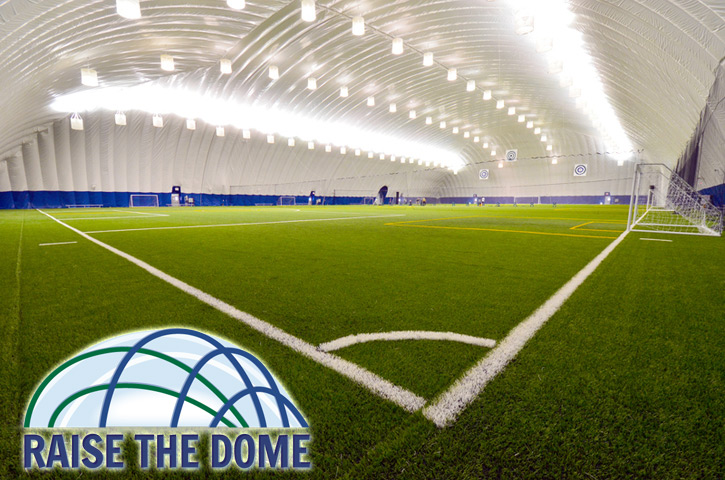
While a sports dome has many benefits, it can be a significant investment (see our white paper on the cost of building a dome.)
Below are some creative ways to fundraise for your dome project so you can to enjoy your sport year-round.
When a group of local businesspeople in Owen Sound, Ontario wanted to erect a dome for the community, they came up with the catchy fundraising name, “Raise the Dome.”
Soon, the Raise the Dome fundraising drive was being covered by local radio stations and donations were pouring in.
Redeemer University in Hamilton, Ontario named their soccer dome fundraising efforts, “The Field for All Seasons Campaign.” They partnered with Ron Foxcroft, a local community leader and founder and CEO of Fox 40 International. Ron Foxcroft invented the Fox 40 pealess whistle, used officially by just about every recognized sports league there is. His involvement brought immediate clout to the project and got their fundraising off to a roaring start.
When Redeemer launched their dome fundraising drive, they didn’t go it alone. They collaborated with the local Ancaster Soccer Club and agreed to share the facility.
The project’s cost was also offset by provincial and federal grants totalling $2.6 million. The city of Ancaster got involved by unanimously approving a $1 million interest-free loan to the school.
The Kelowna United FC headed a similar partnership with the Central Okanagan School District, which wanted to add a second dome facility to share with other sports organizations in the community. The provincial government chipped in with a $350,000 grant to help fund the joint venture.
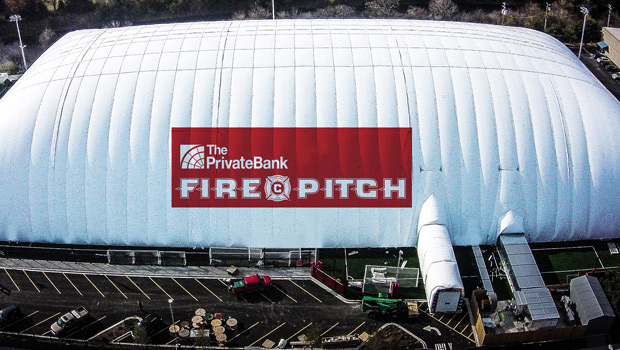
Big-money sports franchises often sell the naming rights to their arenas and stadiums. This has been happening since 1912 when the stadium owner for the Boston Red Sox also owned a company called “Fenway Reality.” Later, in 1926, chewing gum mogul William Wrigley named the Cubs stadium “Wrigley Field.”
While some bemoan stadium naming sponsorship, it can be a great way to help fundraise your dome!
The Chicago Fire MLS club partnered with The Private Bank for naming rights to their new dome, which features two regulation-sized soccer fields. In addition to the Chicago Fire Juniors team, the dome will be used locally by more than 250,000 people each year.
With the explosive growth of soccer in North America, more and more corporations are wanting to get involved in this form of sponsorship.
BMO Financial Group is not only the sponsor of Toronto FC’s BMO Field stadium but also the club’s state-of-the-art Academy training ground (a dome built by the Farley Group!)
Kelowna United also used the popular “Platinum and Gold Sponsors” method, where individuals and local companies where recognized for their contributions to the Kelowna United Dome project. And hey, you might recognize one of the names of the Platinum Sponsors!
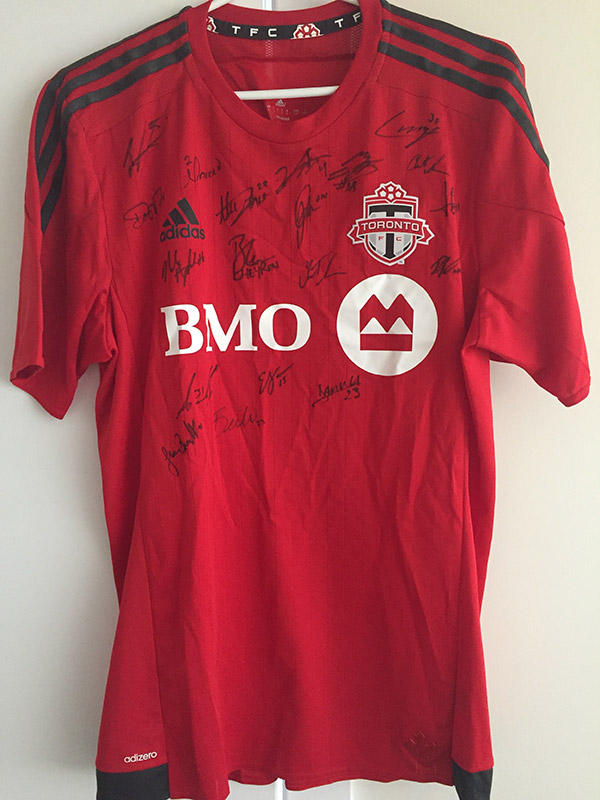
As you read in the above examples, pro sports teams (especially growing pro soccer franchises in North America) are great partners in soccer dome fundraising.
It doesn’t always have to be in the form of major sponsorship, either. For The Field for All Seasons Campaign (still catchy, isn’t it?) MLS Club Toronto FC donated a Jersey signed by each member of their roster. The jersey was put up for auction, which got many individuals excited and involved to donate to the project.
There are many creative ways to fundraise for your dome project. From collaborating with various levels of government, corporations, and local businesses to public and private individuals, pro sports and local sports clubs, there are many ways to get your dome off the ground!
It is not at all uncommon for sports to evolve over time. Sometimes this happens to accommodate changes in technology, requests from players and owners, or a need to deliver what the public now wants from a sport. The latter reason is behind some proposed tennis rule changes announced recently.
The longest professional tennis match took place in 2010. John Isner and Nicholas Mahut battled it out over the course of three days before the former finally triumphed. In all, the contest lasted a staggering 11 hours and 5 minutes.
However, as the Wall Street Journal reported, the actual tennis playing accounted for less than two hours of that time.
With attention spans shortening and so many entertainment options available, there is concern that both current and potential viewers may not watch professional tennis as we know it. The proposed solution? Speed things up.
Association of Tennis Professionals President Chris Kermode feels these suggested changes are, "not only about the next generation of players, but also about the next generation of fans."
"We will be sure to safeguard the integrity of our product when assessing if any changes should eventually be carried forward onto regular ATP World Tour events in the future," he says.
Here are the proposed rule alterations:
Fewer Seeds
The number of seeds would drop from 32 to 16. The idea here is to make the early matches more exciting due to the higher caliber of players. Viewers would become hooked from the beginning and then keep watching right through the championship.
New Format
First to six game sets would drop to first to four, with a tiebreaker resolving a 3-3 deadlock. Also, a sudden death deuce point (allowing the receiver to choose their court side) would replace so-called advantage scoring. Sets would be best of five.
Reduced Starting Time
Once the second player steps onto the court, the match must begin in five minutes, down from the previous ten.
Shot Clock
Already tested at the U.S. Open qualifying and the Next Gen ATP Finals, this would ensure players adhere to the 25-second rule between serves. The clock would also time the warm-up, set breaks, and medical timeouts.
No Lets
A no-let rule for serving.
Player and Coach Communication
While communication would still be possible between players and coaches at certain points during the match, the latter could no longer step onto the court.
Electronic Line Calling
There would be only the chair umpire on the court. An electronic line calling system would signal unsuccessful serves and when the ball is out, replacing its human equivalent.
Increased Spectator Freedom
Elimination of the rule restricting spectators from coming or going during a match.
Kermode stated that these alterations should not alienate the current fanbase. A shorter format and faster pace may well stop people from changing channels, but that remains to be seen. If these come to pass, it will certainly be interesting to gauge player reactions, particularly veterans who made their reputations via the traditional form of play.
Changing demographics are also clearly a factor. As the veterans who reliably drew viewers enter retirement, executives hope to attract a younger demographic to the sport. The thinking is that a swifter game, and not just exciting personalities, is key to making that change.
